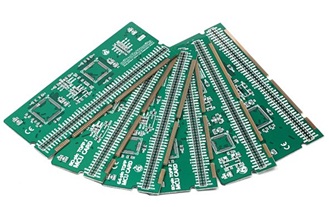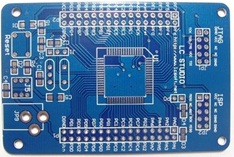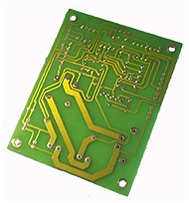 If you are a relative new comer to the PCB industry and are interested in purchasing high quality PCBs for your electronic devices then you might want to read Part 1 of this blog first. New comers are often confused about how price of PCB fabrication is decided. It is better if you understand the whole process from the very beginning rather than stumble your way through it. Once you have read the first blog, you will be able to follow along the rest of the process very easily.
If you are a relative new comer to the PCB industry and are interested in purchasing high quality PCBs for your electronic devices then you might want to read Part 1 of this blog first. New comers are often confused about how price of PCB fabrication is decided. It is better if you understand the whole process from the very beginning rather than stumble your way through it. Once you have read the first blog, you will be able to follow along the rest of the process very easily.
In the last blog we focused completely on the primary cost considerations for PCBs. They covered the most essential steps of the PCB fabrication, but the process doesn’t end there because there are still the secondary cost considerations to think about. You will see that in some ways, they are almost more important.
Secondary Price Considerations
Finish Type
Lead is the most common finishing type in PCBs. It is also referred to as Hot Air Solder Leveled (HASL) and considered a standard when it comes to PCBs. The non-standard varieties include gold finishing options like gold fingers, ENIG, body gold, ETC., silver finishing options and a few others. The standard variety doesn’t really have that much effect on the final price but if you opt for non-standard then you might have to pay up to 10% to 20% more than the cost of the overall project. This mostly depends on the board specifications.
Specification Standard
IPC Class 2 is a The most common standard for final printed circuit board and quality processes inspection is IPC Class-2. Again, depending upon the specifications of the board Class-3 type of standard might be required. This upgrade usually calls for additional processes like coupons & cross sections to be included in the manufacturing process. If you are in need of Class-3 process then you might want to make yourself ready to pay additional 15% to 20% of the overall cost of the project. That is why you should seriously think about it before opting for Class-3.
Tooling & Test Charges
Tooling usually includes the price of film costs, CAM time, Etc. which are basically the test that have to be performed during the manufacturing of the board. Electrical test is usually conducted to make sure that the board is electrically sound and they include basic open and shorts test of the PCB. Additional tests such as Ionic testing and TDR for Impedance testing have to be requested specifically by the customer and their price usually varies from fabrication house to fabrication house.
 Drill Type
Drill Type
You already read about mechanical drill cost in Blog 1 but usually even smaller holes are required which are called microvias (the laser drill process). Needless to say, the use of laser drills, usually plays a big role in driving up the overall cost. Blind or Buried vias (that don’t go through the board entirely) is another cost factor to consider about. You can end up paying 20% of the overall project cost for each additional drill.
Via Fill
Vias on a PCB might sometimes have copper plating and finish in the holes but they never actually fully filled. But by special request you can have them filled with conductive or even non conductive material. However, if you opt for this process then it might add 10% to the overall cost.
Lamination Process
Another thing that might add to the cost is how much processing a multi layered PCB requires outside of the standard process. Different materials required for lamination play a crucial role in determining the cost of the PCB. But you need not worry about it if you only require single or double sided PCBs.
 Fabrication
Fabrication
Standard fabrication won’t usually cost you that much. However additional cost will be added if you request for further fabrication on to the finished board with processes like: These include things like
- Counterbores
- Countersinks
- Complex Routing
- Controlled Depth Drilling
The cost of these processes varies on what is actually required. But all of this has to be specified by the customer.
Now you know exactly what goes into pricing the PCB. The manufacturers take all these things into account and prepare the quote for the client. Knowing what goes into making the PCBs that would suit your electronic devices best would enable you to ask the right question and which, in turn, will ensure that you get the perfect PCBs every time.
We, at Super PCB work with our customers to make sure that they get a quote they are completely satisfied with. Our rates might not be the cheapest but they are certainly the most competitive. We specialize in rigid, flex, and flexi-rigid printed circuits boards and we can guarantee the best custom PCBs and PCB prototype that will be perfect for any application. For more information, contact us right now!
